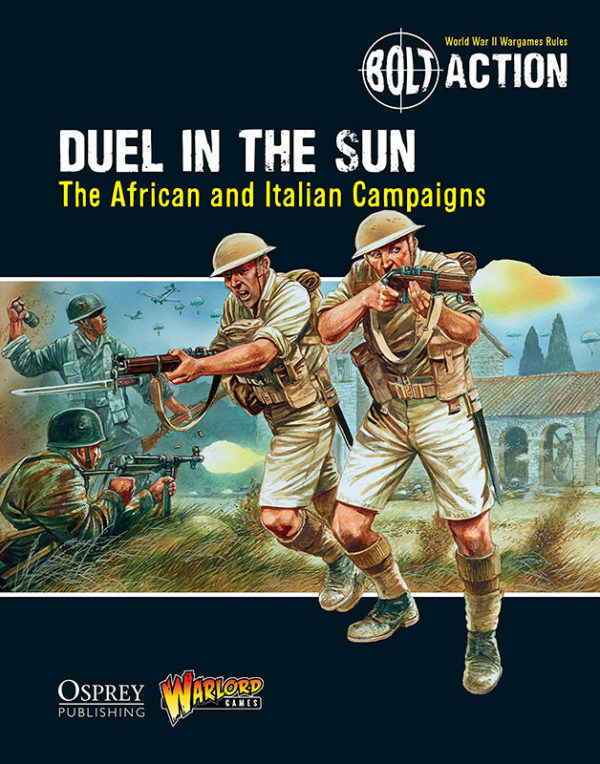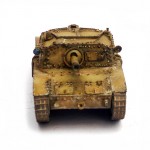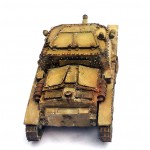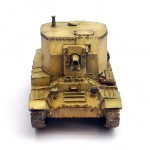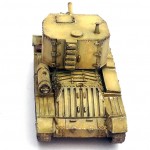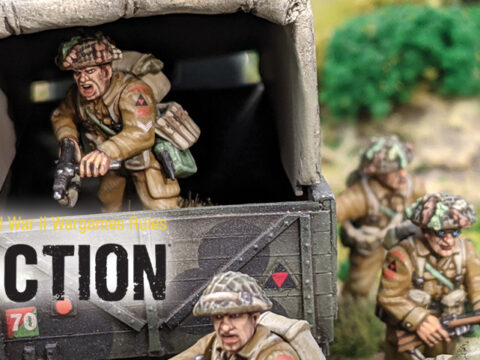With this versus article, Andy Singleton of VolleyFire Painting is back in the desert (No I don’t have an industrial quantity of sand paint I need to get through – AS), this time looking at the Italian Semovente da 75/18 and the British Bishop 25pdr self-propelled gun.
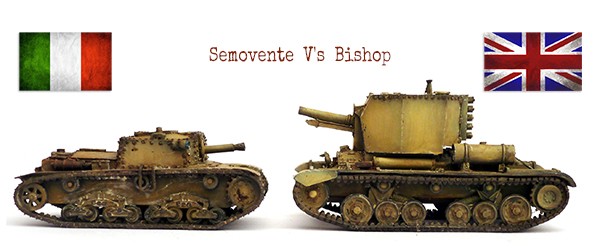
Semovente Da 75/18
The Semovente is an Italian self propelled gun mounting a 75mm mountain gun in an armoured casemate in a very low hull. If this sounds reminiscent of the StuG III, then there is a very good reason for that. Following on from the French campaign in 1940 where the StuG saw its first combat deployment, the Italians were swift to adopt a similarly designed vehicle, with Fiat producing the first trials vehicles in February 1941. The first batch of production series vehicles was intended to enter service in mid 1941, however these vehicles did not enter service until January 1942 in North Africa.
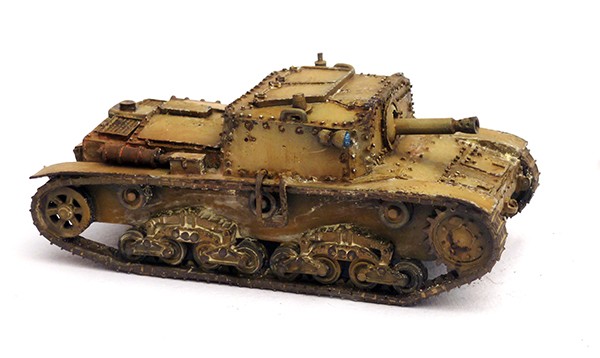
The Semovente 75/18 was intended to provide infantry with direct artillery support, despite this however the weapon had a good range of motion for a casemate mounted weapon, and could achieve a very respectable 7000 or so meter range. The Semovente could also mount a pintle mounted Breda machine gun, though this appears to have been pretty rare in the field.
Much like the StuG, although intended for infantry support, the Semovente actually proved to be quite capable at destroying enemy armour, especially in the early stages of the desert campaigns it was deployed too, utilising its low profile to make a very effective (For the period), tank destroyer.
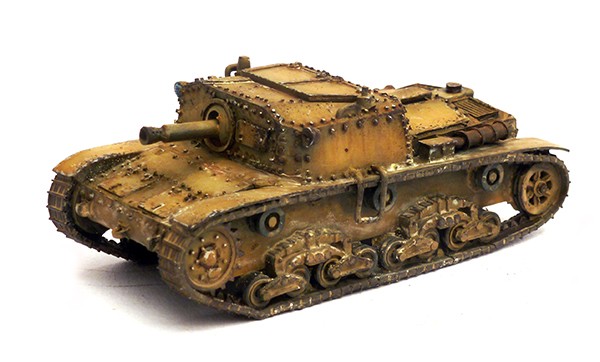
Semoventes served right through the North African and Tunisian campaigns, with the vehicle continuing to serve into the Italian campaign. At the Italian armistice in 1943 approximately 130 or so were taken over by the German military, with the highest concentration of vehicles being seen in the Waffen-SS Maria Theresa division, though other vehicles being seen in security and counter partisan forces, Fallschirmjäger divisions and even with the Gebirgsjager.
The Semovente 75/18 in Bolt Action
For a basic Semovente at regular, you’ll be paying a mere 170 points. For an extra 15 you can add a pintle mounted Medium Machine Gun as well, to give yourself some extra suppressive capability and keep infantry on their toes.
For your very reasonable points outlay, you will receive a medium armour tracked vehicle with a medium anti-tank gun. So far so average. However, the Semovente has a very nice and tasty trick up its well-tailored sleeve, in that instead of having the somewhat mediocre HE capability of most medium anti-tank weapons, it actually has a D6 blast, meaning it suddenly becomes somewhat threatening to weapon teams and infantry squads, especially those out in the open and easy to hit.
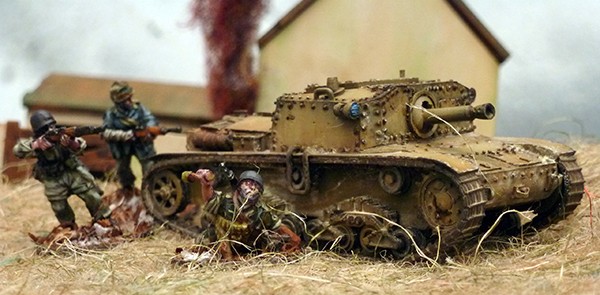
This multi role weapon system allows the Semovente to hunt anything that may prove to be a threat, and can happily support an attack or be a centre point of a defence. Mix 2 into a 2 platoon list could be especially fun, as it’s such a flexible weapon that it can easily become a target for the enemy when left alone.
Being armour 9+ you don’t have a ton of protection, however the small size of the machine does mean that terrain can easily be exploited to your advantage, the real vehicle was only about 6 feet tall, so most terrain will allow it to lurk quite neatly.
Whilst the Semovente is a great vehicle, it does have one huge weakness, it has a riveted construction which means that any shots coming in from the side or rear gain an extra +1 penetration modifier, so shots from the side only require a 7+ to get through, and shots from the rear require a 6+, although that shot must still come from a heavy weapon.
Italian armour tends to get quite a bad rap, however I think the Semovente 75/18 is a flexible and effective armoured vehicle, and it performed its tasks well until technology over took it.
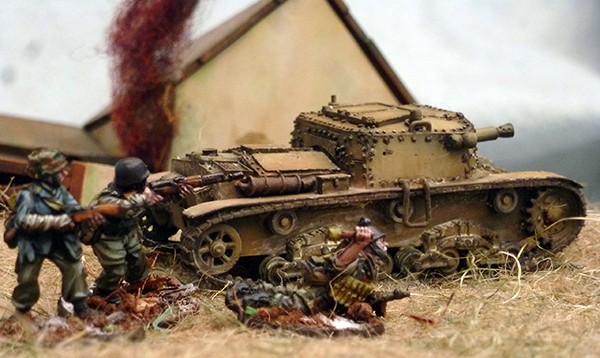
Bishop Self Propelled Gun
In 1941 the British army found itself short of artillery that could keep pace with armoured formations as they swept around the battlefields of the western desert. The call to design a new self-propelled gun was put out in June 1941, and by July a prototype using the ubiquitous Valentine hull mated with the legendary 25 pounder gun/howitzer had been designed, and by November production had commenced. Wish such an immensely short development period, even by wartime standards some corners were cut, and the design had a few fairly large flaws.
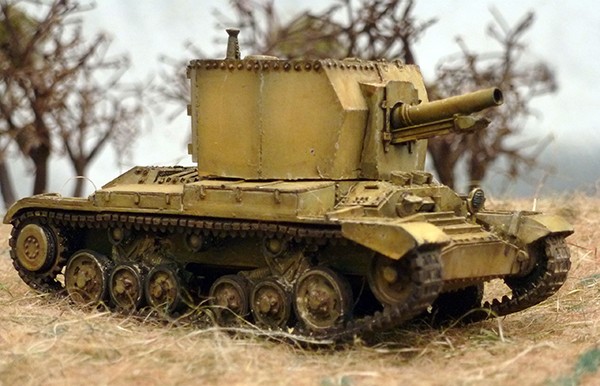
Considering one of the key motivations behind the design was mobility, a top speed of 15mph was somewhat disappointing. The design of the boxed super structure with its low roof reduced the elevation of the main weapon, and thus reduced its overall range when firing indirectly. So much so in fact, that the crews had to dig ramps into the desert to aid the elevation of bishop by angling its entire hull upwards.
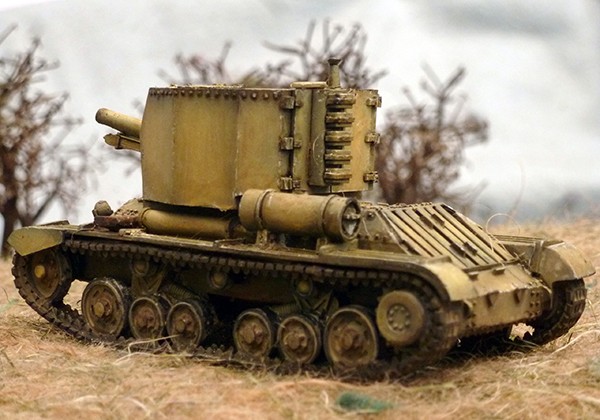
With the imminent arrival of the American designed M7 priest, production was limited, and only around 150 or so Bishops entered service, first seeing combat at the second battle of El Alamein. The majority of these vehicles served with the 23rd armoured brigade, which was largely equipped with Valentine tanks, thus at least meaning the Bishops low speed was less of an issue
Despite these failings, the Bishop soldiered on through the north African campaign, and a few vehicles continued to serve in the early stages of the Italian campaign as well, before being replaced with more modern and capable machines.
The Bishop in Bolt action
The Bishop is only available as inexperienced or regular, and at Regular costs 150 points, with a 10 point upgrade to give the vehicle anti-tank shells. The bishop is also armour 9+, but classed as slow, meaning it can only move at a speed of 6” at the advance, and 12” when given a run order.
Bishops come armed with a light howitzer, and the previously mentioned anti-tank shell upgrade allows them to alternatively fire as a light anti-tank gun thus giving it a little more flexibility. Being a self-propelled gun, the Bishop’s 25pdr is fixed to a frontal ark of fire, meaning that you will have to give it a move order to engage anything out of its 90 degree frontal ark.
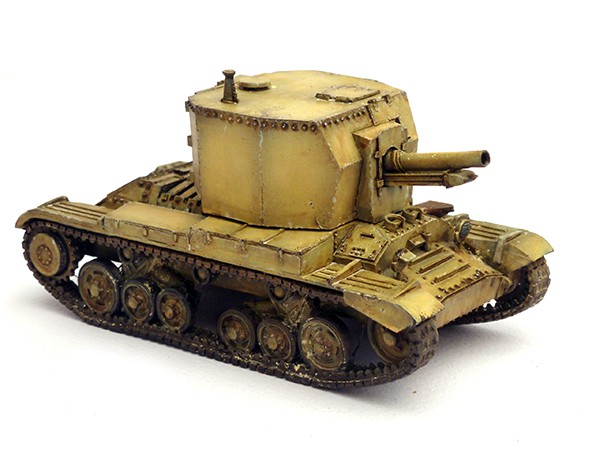
Although it’s failings are fairly significant, the Bishop does fill a very useful role in early war desert British lists, being significantly cheaper in points than the Sherman, whilst maintaining a weapon with similar, all be it slightly weaker anti-tank performance. Combined with fairly effective early war era armour, you can use the Bishop as somewhat of a key support element, lurking at the back and firing indirectly, although it will still require line of sight as it does not have a spotter. Perhaps a more efficient use is to place it in a fairly open corner so that it can draw oblique sight lines, and lock down areas of the battle field.
As the Bishop does not have a machine gun, you won’t want it right on the bleeding edge of the front lines, especially with its slow speed. Instead, think of it more as an artillery piece that can relocate when required, and is more resilient to the likes of mortars and small arms, and be careful in how you position it.
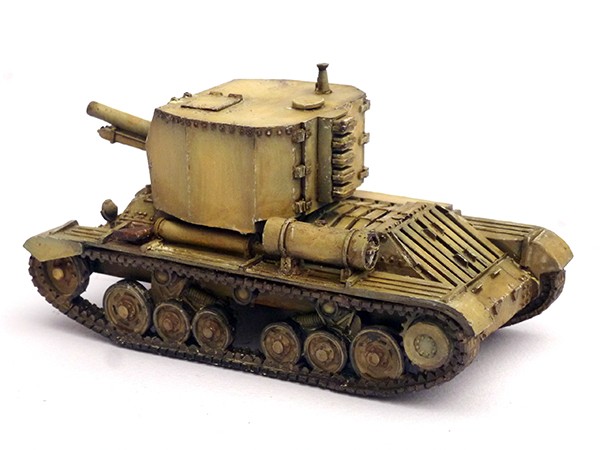
In Summary
To sum up, both the desert war vehicles provide a useful HE punch at a low points level, whilst also coming with some fancy tricks for firing as anti-tank guns as well. Both of these machines will require a little forwards thinking as to what roll you want them to perform, and are best used to support other elements of your army as opposed to being the lynchpin of your battle plans
Do you have an article within you? Have you knowledge or a collection to show to the world of Bolt Action? Then drop us a line with a couple of pictures to info@warlordgames.com or share with all over at the Warlord Forum
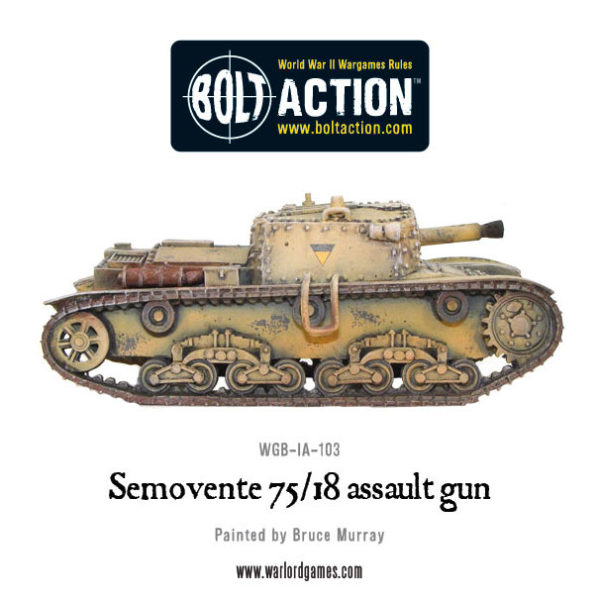
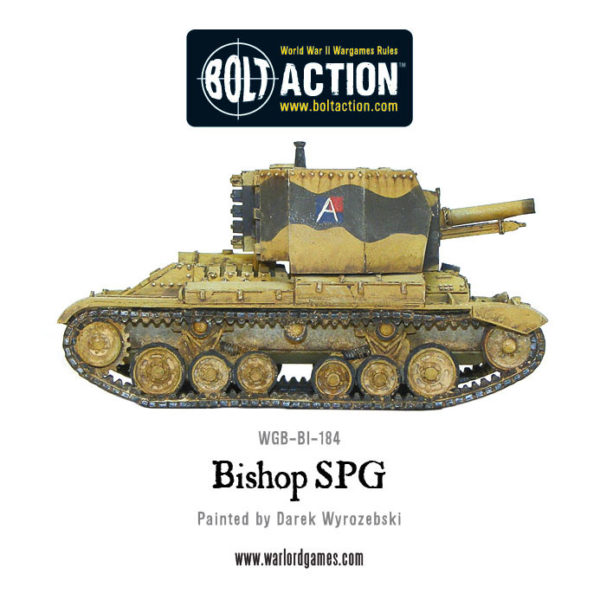
Duel In The Sun
Totally compatible with the forth coming Bolt Action 2, Duel In The Sun sets the scene and challenges you to battles across the desert and into Italy with your Bolt Action forces.
